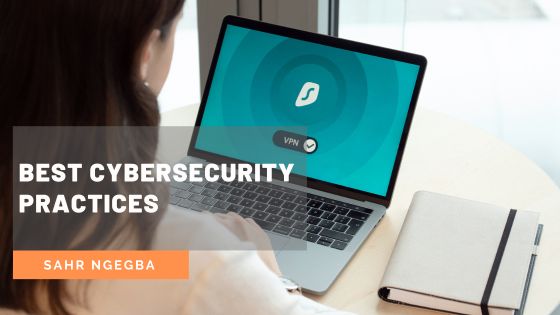Cybersecurity is an essential part of life. With increasing cyber threats, it’s crucial to implement best practices to keep our personal and professional data secure. This article discusses some of the best cybersecurity practices that can help protect you from cyber threats.
Use strong passwords: One of the most crucial practices is using strong passwords. Your password should contain a combination of uppercase and lowercase letters, special characters, and numbers. Avoid using easy passwords like your name, date of birth, or sequential numbers.
Enable two-factor authentication: Two-factor authentication (2FA) is an additional layer of security requiring a code or biometric verification. Enabling 2FA lowers the risk of unauthorized access to your accounts.
Keep software up to date: Keeping software current ensures your device is protected from the latest security threats. Continuous software updates include security patches and bug fixes, so installing them as soon as they become available is essential.
Use antivirus software: Help detect and remove malware from your device by installing reputable antivirus software and keeping it up to date.
Be cautious of phishing scams: Phishing scams are fraudulent attempts to obtain passwords or credit card details. Be careful of emails or messages from unknown sources asking for personal information or urging you to click on a link. Verify the sender’s identity and be wary of any suspicious requests.
Use a virtual private network: A VPN encrypts internet traffic through a secure server. This can help protect you from cyber threats such as hacking and identity theft, especially when using public Wi-Fi.
Backup your data: Back up your data is a critical cybersecurity practice that can help protect you from data loss due to cyber-attacks or hardware failure. Regularly back up data to an external hard drive or cloud storage service.
Limit access to sensitive information: Limit accessibility to financial or personal data to only those who need it. This can help reduce the risk of data breaches or insider threats.
Educate yourself and your employees: One of the most effective cybersecurity practices is education. Stay informed about cyber threats and educate yourself and your team about best practices for staying safe online.
Have a cybersecurity plan: Finally, it’s essential to have a cybersecurity plan in place in case of a cyber attack. This should include steps to take in case of a data breach, such as notifying customers or clients and a plan for restoring data and systems.
Cybersecurity best practices include using strong passwords, enabling 2FA, keeping software up to date, using antivirus software, being cautious of phishing scams, using a VPN, backing up data, limiting access to sensitive information, educating oneself and employees, and having a cybersecurity plan. By implementing these practices, you can significantly reduce the risk of cyber-attacks and protect your personal and professional data.
It’s important to note that cybersecurity is an ongoing process, and it’s essential to stay informed about the latest threats and best practices. Cyber threats are constantly evolving, and staying updated with the latest security measures is crucial to protect yourself and your organization.
In addition to these best practices, your organization’s cybersecurity culture is essential. This includes promoting cybersecurity awareness, training employees on best practices, and creating policies and procedures to ensure cybersecurity is a top priority. By creating a cybersecurity culture, you can ensure that all employees are aware of the risks and are taking steps to protect themselves and the organization from cyber threats.
By using strong passwords, enabling 2FA, keeping software up to date, using antivirus software, being cautious of phishing scams, using a VPN, backing up data, limiting access to sensitive information, educating oneself and employees, having a cybersecurity plan, and promoting a cybersecurity culture, we can significantly reduce the risk of cyber-attacks and protect our personal and professional data.

